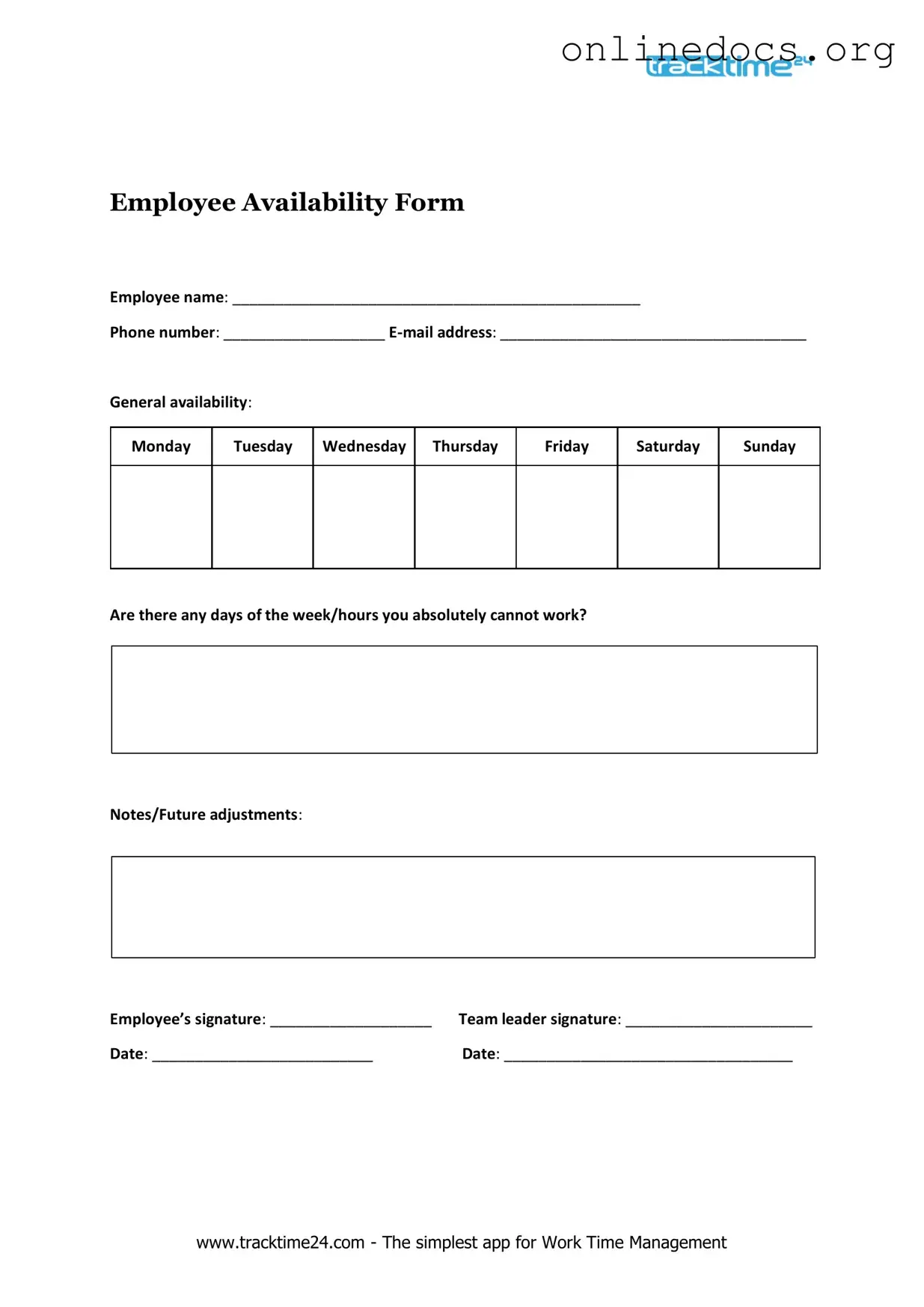The Employee Availability form shares similarities with the Time-off Request form. Both documents are designed to manage employee schedules effectively. The Time-off Request form allows employees to formally request leave, specifying dates and reasons. This helps employers understand when an employee will be unavailable, just as the Employee Availability form outlines when an employee is available to work. Both forms are essential for maintaining a smooth workflow and ensuring that staffing needs are met.
When managing tenant applications, landlords may consider utilizing a comprehensive legalformspdf.com resource to access vital documentation. Rental applications play a significant role in tenant selection, mirroring the importance of various employee forms in workforce management.
Another document that resembles the Employee Availability form is the Shift Preference form. This form allows employees to indicate their preferred shifts or working hours. Like the Availability form, it focuses on the scheduling aspect of employment. By collecting this information, employers can better align work schedules with employee preferences, thereby improving job satisfaction and retention.
The Work Schedule Agreement is also similar to the Employee Availability form. This document outlines the agreed-upon working hours between an employer and employee. It serves as a formal acknowledgment of when an employee is expected to work, paralleling the purpose of the Availability form, which details when an employee is able to work. Both documents help clarify expectations and responsibilities regarding work hours.
The Leave of Absence form is another related document. While the Employee Availability form focuses on when an employee can work, the Leave of Absence form details when they cannot. This form is crucial for managing extended periods of absence, ensuring that employers are aware of significant gaps in availability. Both forms contribute to effective workforce management by providing clear information about employee presence.
The Onboarding Schedule form is also comparable. It outlines the training and orientation sessions for new hires, specifying when they will be available for these activities. Like the Employee Availability form, it helps employers plan resources and training sessions based on when employees can participate. This ensures that new employees are integrated smoothly into the organization.
The Employee Schedule Change Request form is similar as well. This document allows employees to request changes to their existing work schedules. It serves a similar function as the Availability form by addressing employee needs regarding their working hours. Both documents facilitate communication between employees and management, ensuring that any scheduling adjustments are handled efficiently.
Lastly, the Performance Evaluation form shares a connection with the Employee Availability form. While it primarily focuses on assessing employee performance, it often includes discussions about availability and scheduling preferences during evaluations. This connection highlights the importance of understanding employee availability in relation to their overall job performance and satisfaction.
